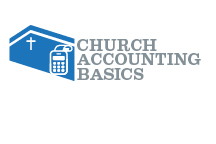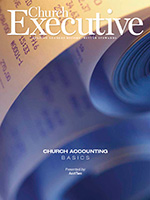
By Tammy Bunting
How to lay the foundation for true church  accounting stewardship
accounting stewardship
“And now you know the rest of the story.”
Remember the words of Paul Harvey, the legendary radio broadcaster?
As leaders of the church, we can’t depend on a CPA firm performing an audit to give us “the rest of the story.” Transparency and accountability can be ongoing and non-invasive — but only when we build a good financial infrastructure.
By creating easy to manage accounts and measuring performance against expected outcomes, we ensure accountability and transparency in our churches.
There are two main areas we can focus on to learn how to develop financial awareness which, in turn, result in financial statement transparency and accountability:
1) Chart of Accounts — reporting criteria
2) Inspecting what we expect
 Simplify your Chart of Accounts
Simplify your Chart of Accounts
I don’t think we give enough credit to the Chart of Accounts for being the source of our transparency challenges!
With modern accounting software, you can achieve the insights you need to understand and validate financial statement data and documentation. Today’s financial tools should simplify the chart of accounts and allow us to “tag” transactions with not only the “what” but the “why” and the “where.” With a flexible financial foundation, you can add context to your data easily. We need to raise our expectations in church finance; our software should keep it simple and understandable.
I think there’s nothing more frustrating for financial committees or boards of directors than to look at financial statements that are either too summarized or too complicated to understand the results. By simplifying the Chart of Accounts and using dimensional components, modern accounting software introduces an entirely new way to track and report on financial and operational data. With a flexible foundation, you gain quick access to the insights necessary to ensure confidence in the data presented. Having access to changing cash amounts (by multiple levels of ministry), and having the ability to view fluctuations between budgets or years at any level (presented weekly or monthly) eliminates any question about the accuracy of the data.
Although we value the need to present GAAP financial statements, and to have a certified public accountant identify any material weaknesses, our goal is to have financial data validated and trends assessed on a regular basis. Any unusual changes can be quickly identified and addressed accordingly.
Inspecting what we expect

Being good stewards of the resources God has provided isn’t just something we hope we can do — it’s something we’re expected to do. Measuring performance brings greater awareness to ministry operations. By determining the expected outcomes and measuring performance against them, we can bring any significant variances to the forefront.
How can we help our church leaders get the broad perspective they need to gain insight and confidence in dollars and the impacts? This is where I believe analytics come in. Analytics refers to the discovery and communication of meaningful patterns in data. When looking at the measurements of impacts — and not just dollars spent — you gain insight. By clearly defining a positive trend or successful community impact, you’re able to make results-driven decisions.
Accountability is simply the willingness to accept responsibility. It can become tricky if you’re responsible for managing something over which you don’t have full control. Dealing with church finances can be challenging when you feel detached from the numbers and their impacts. When things are moving at the speed of light and change is just a normal day-to-day event, accountability can appear to be thrown out the window. This is where allocating funds ahead of time comes in handy. Creating budgets can establish a baseline from which to work.
Some ministry leaders literally break out into a sweat at the mere mention of budgets. They shouldn’t. Budgets allow you to have some control over what you spend. A monthly budget can help you decide how to spend your money and prevent unexpected purchases.
Accountability doesn’t mean “perfection.” Focus instead on being willing and flexible enough to accept what it’s going to take to be accountable.
Transparency made simple
If financial statements aren’t “used” (meaning no one understands the data), then they’re just numbers on a sheet of paper. To have full transparency, the goal in presenting financial data is to provide “useful” information. That means: clearly stated financial performance and cash flows, presented in such a way that they validate whether or not mission efforts are being met or better yet, exceeded.
Managing finances under defined budget parameters, and reporting any variances, will give the governing body the assurance that the church’s financial status is stable.
Disclosing cash flows and forecasts based on current trends and future expectations satisfies the need for further clarity and demonstrates accountability.
Most important: keep it simple. Don’t let the numbers take over. Tell the story; show what matters; summarize the right data; and project accurately.
Tammy Bunting is the Director of Not-for-Profit Services at AcctTwo, which provides cloud-based financial management software and outsourced accounting for churches. AcctTwo’s solutions help churches automate processes, increase accuracy, and provide a complete financial picture.


